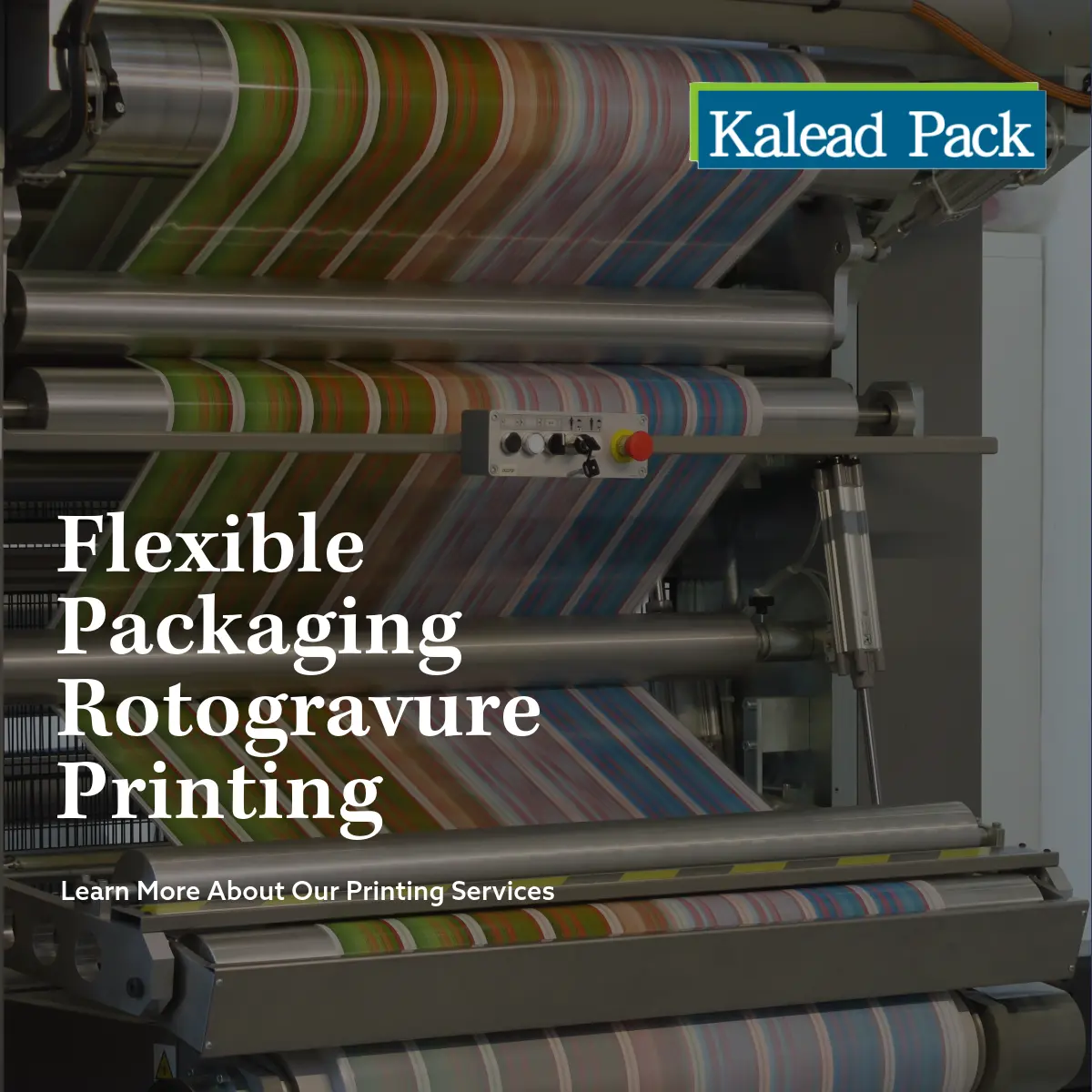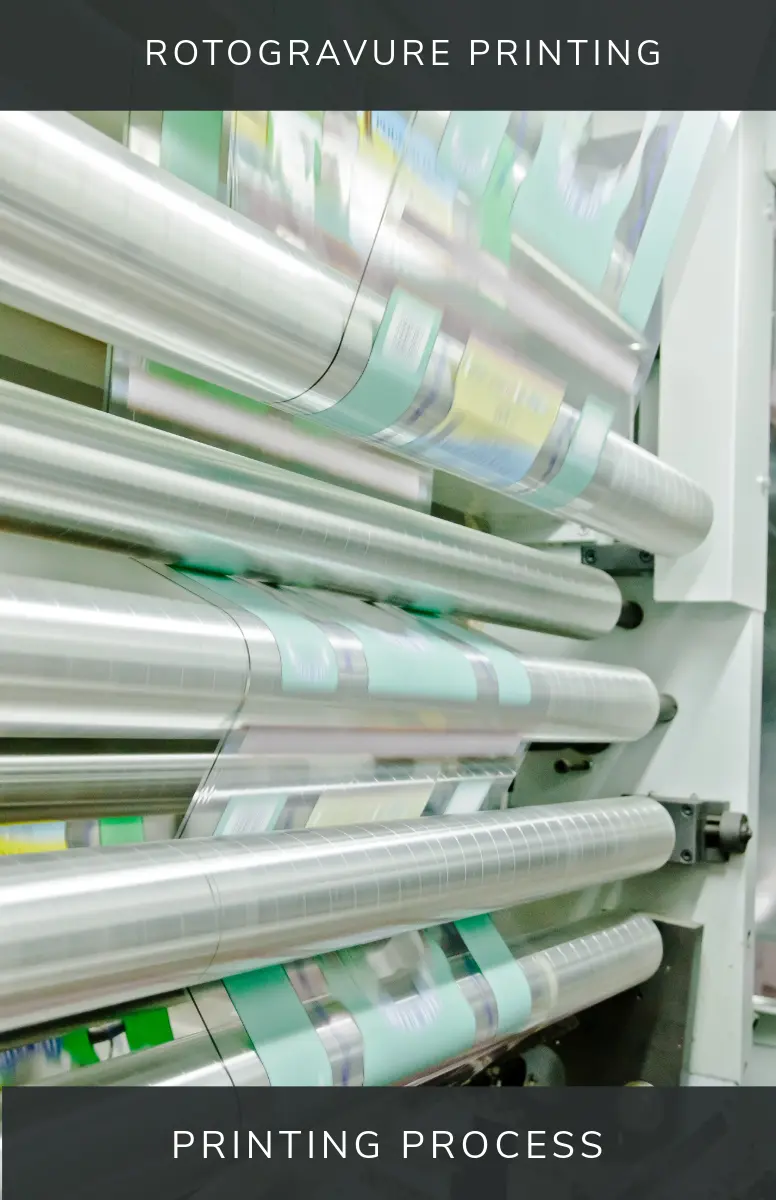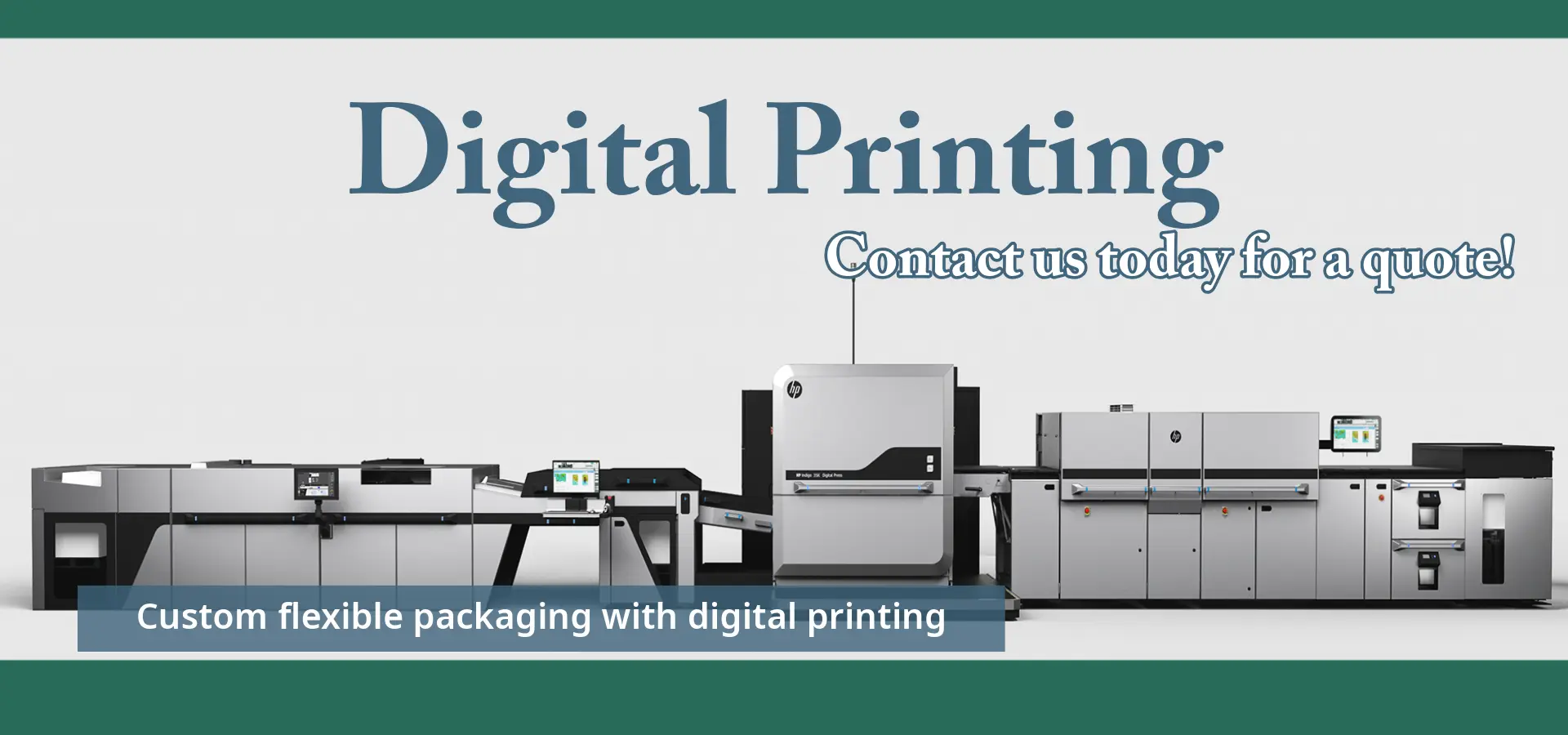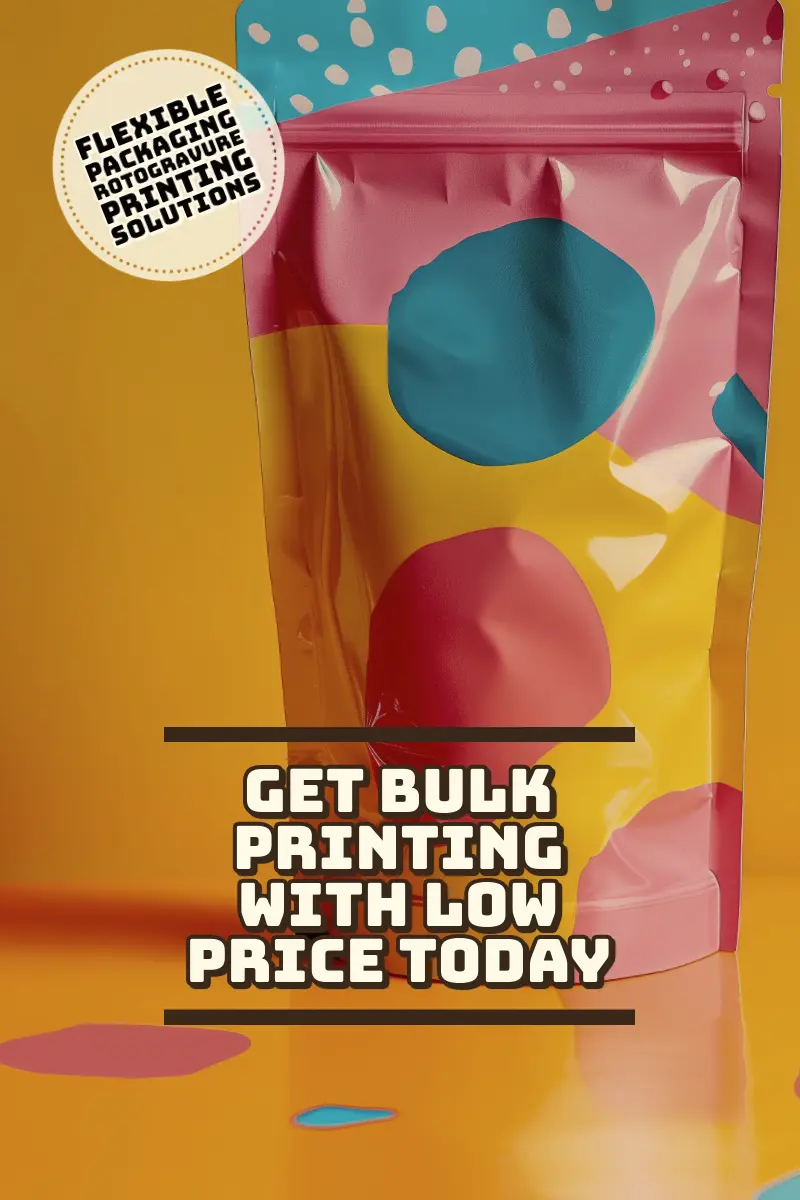Impressão em Rotogravura
Flexible packaging rotogravure printing remains the top choice for large-scale custom packaging. This well-established traditional printing technology provides high-quality image reproduction, making it ideal for various flexible packaging materials.
What Is Flexible Packaging Rotogravure Printing?
Flexible packaging rotogravure printing is an effective method to print images and text on plastic, foil, and paper. This process involves engraving the image onto a cylinder, which transfers the ink onto the packaging material. The cylinder contains tiny cells that hold the ink, and it transfers the ink to the material as it rotates.
One of the main benefits of rotogravure printing is its ability to produce high-quality, vivid images on packaging surface. This is perfect for packaging that needs to be eye-catching and detailed, like food, medicine, and other consumer products.
(Many food or non-food manufacturers use this printing method to make detailed designs on bulk packaging bags.)
The process starts with engraving the cylinder with the desired image, using either a laser or a diamond tool. The operator then mounts the cylinder onto the printing press, where it picks up ink from an ink fountain. A doctor blade removes excess ink, leaving the ink in the engraved cells. As the material passes through the press, it contacts the inked cylinder, transferring the image onto the material.
Rotogravure printing is efficient and fast, making it a cost-effective choice for large-scale production. It offers excellent color consistency and uses various inks and materials, making it suitable for different packaging needs.


Rotogravure Printing Process
1. Cylinder Engraving
As opções de rotogravure printing process begins with cylinder engraving. A copper-plated steel cylinder gets engraved with tiny cells. Each cell holds ink.
2. Ink Application
Subsequently, the cylinder spins within an ink reservoir.. The cells fill with ink. A doctor blade scrapes off excess ink from the surface. Only the cells contain ink.
3. Printing
The cylinder then contacts the substrate, which could be paper or plastic film. The ink transfers from the cells to the substrate. This step ensures precise and consistent prints.
4. Drying Process
After printing, the material passes through drying ovens. These ovens evaporate solvents from the ink. This step is crucial to prevent smudging.
5. Material Rewinding
Finally, the printed material gets rewound onto a roll. This makes it ready for further processing or packaging. Rewinding ensures that the print remains intact.
6. Slitting
The slitting process begins with mounting the printed roll material onto the slitting machine. The machine uses rotary blades or laser cutting technology to cut the wide roll into strips of the desired width.
Advantages of Rotogravure Printing
High-Quality Image
Rotogravure printing offers excellent image quality. The process can produce highly detailed images with sharp lines and vivid colors. This makes it ideal for packaging that needs to stand out on shelves. Colors remain consistent across large print runs.
Flexible Substrate Printing
Rotogravure prints on multiple substrates. It works well with thin films, aluminum foil, and paper. This flexibility allows businesses to choose the best material for their products. For example, snack packaging often uses thin film for their durability and lightweight properties.
Cost-Effectiveness
Rotogravure is efficient for long-run printing jobs. The initial cost of creating engraved cylinders is high.
However, these cylinders last a long time without degrading. This leads to lower costs for large volume orders. Companies save money when producing millions of identical packages.
Cost Benefits
Rotogravure has significant cost benefits. Although setup costs are high, per-unit costs decrease with larger quantities. This makes it a cost-effective choice for products requiring mass production. Brands benefit from lower overall expenses while maintaining high-quality prints.
Rotogravure Printing for Large Production Runs
- Rotogravure printing may be an excellent option for brands looking to reduce per unit costs, especially for production runs of 10,000 units or more.
- It is a more durable and fade resistant printing method than impressão digital.
- A correspondência de cores Pantone é possível para cores precisas.
- Permite uma ampla seleção de acabamentos e efeitos para embalagens flexíveis.
- A consistência de cor é excelente entre diferentes tiragens.
- São utilizados cilindros de cobre, um para cada cor, que podem ser reutilizados por milhões de impressões em várias tiragens.
- Os custos dos cilindros são únicos e geralmente economizam mais após a primeira tiragem.
- Cilindros individuais podem ser substituídos para atualizar designs com alterações nas informações da fórmula.
Rotogravura vs. Impressão Digital
A impressão de embalagens flexíveis possui dois métodos comuns. Aqui está um resumo deles:
Rotogravura:
- Melhor para projetos de impressão de alta qualidade, grande volume e consistência.
- Ideal para indústrias que necessitam de embalagens detalhadas e vibrantes, como alimentos e farmacêuticos.
Impressão Digital:
- Melhor para tiragens pequenas a médias e projetos personalizados.
- Ideal para negócios que precisam de agilidade e impressões personalizadas, como materiais de marketing e embalagens sob medida.

Comparação entre Impressão Digital e Rotogravura
| Característica | Impressão em Rotogravura | Impressão Digital |
|---|---|---|
| Tecnologia | Utiliza cilindros gravados | Utiliza arquivos digitais e jato de tinta/laser |
| Tempo de Configuração | Tempo de configuração longo | Tempo de preparação curto |
| Eficiência de Custos | Custo-benefício para grandes volumes | Custo-benefício para tiragens pequenas |
| Qualidade de Impressão | Impressões de alta qualidade e consistentes | Alta qualidade, mas pode variar |
| Gama de Cores | Excelente reprodução de cores | Boa gama de cores |
| Tempo de Entrega | Mais demorado devido à preparação e produção | Tempo de entrega rápido |
| Flexibilidade | Menos flexível, ideal para trabalhos repetitivos | Altamente flexível, fácil alteração de designs |
| Custo Inicial | Alto custo inicial devido à gravação dos cilindros | Baixo custo inicial |
| Impressão de Dados Variáveis | Não adequado | Ideal para impressão de dados variáveis |
| Impacto Ambiental | Maior desperdício e uso de químicos | Menor desperdício, mais ecológico |
| Durabilidade das Impressões | Muito durável e resistente (até 3 anos) | Durável, mas pode desbotar com o tempo |
Perguntas Frequentes
O processo de rotogravura utiliza cilindros gravados para transferir tinta ao substrato. O cilindro gira em um reservatório de tinta, captura tinta em suas células gravadas e a transfere para o material.
A rotogravura oferece imagens de alta qualidade e precisão, eficiência e velocidade. Também é custo-benefício para grandes tiragens devido à sua durabilidade e capacidade de produção rápida.
Sim, a rotogravura é custo-benefício para grandes volumesA configuração inicial pode ser cara, mas economiza a longo prazo em produções em larga escala.
Sim, a KaleadPack fornece amostras gratuitas e suporta envios internacionais. Entre em contato conosco. Oferecemos soluções completas em embalagens, incluindo sacos, impressão de filmes e máquinas de embalagem.

